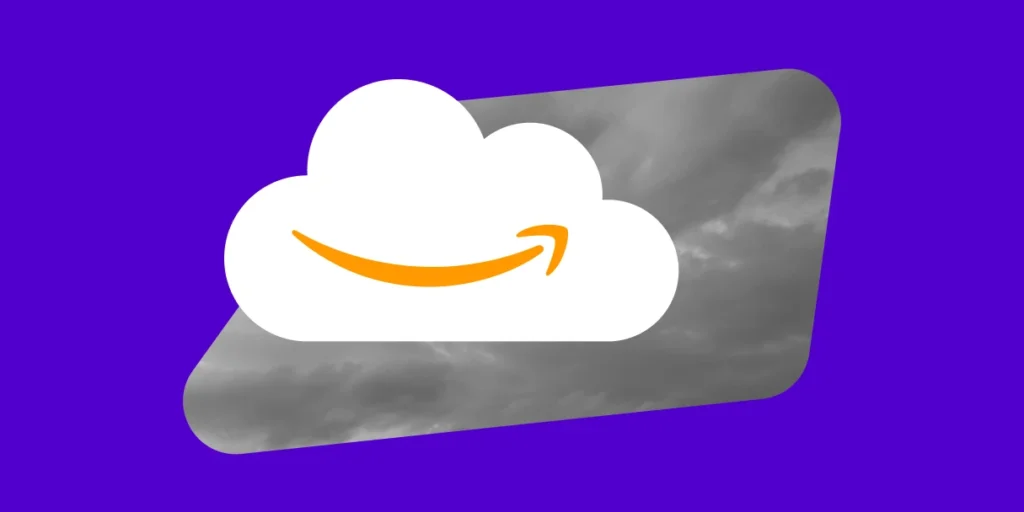Google/Alphabet raked in 26.06 billion in Q4 last year, and aggregate paid clicks were up +36% from Q4 2015.
We’re expecting great things from AdWords Search and Shopping in Q4 2017–but we also know that advertisers won’t profit without the right strategy early on.
“Year over year trends show that holiday shopping is starting earlier and earlier,” says Josh Brisco, Manager of Retail Search Operations at CPC Strategy. “Retailers would be wise to get their holiday promotion and advertising efforts dialed in as early as the start of November to capitalize on this.”
Q4 is a chaotic time, so we made this simple with a Q4 advertising optimization checklist. Most of these optimizations are based on Shopping, but there are plenty of tips (under “All”) that apply to both Search and Shopping.
The Google AdWords Q4 Advertising Checklist
Make Q4 2017 your year to dominate on AdWords with this guide and checklist from the experts at CPC Strategy. You can get more information about each of these tips in the sections below.
- Monitor Shopping Feeds Daily (Shopping)
- Watch Budgets & Bidding (Shopping)
- Set Up the Right Shopping Reports (Shopping)
- Adjust Your Mid-Funnel Search Terms (Shopping)
- Break Out Your Best-Selling Items (Shopping)
- Update Ad Extensions (Search)
- Plan on Data Delays (All)
- Use Powerful Remarketing Tactics (All)
- Scale Back Bids Based on Final Ship Dates (All)
- Loosen Your ROI Goal (All)
Google Shopping Tips
Monitor Shopping Feeds Daily
Monitor feeds daily to ensure products are live and no anomalies exist. If pricing changes often on your products, consider a separate pricing feed to reduce indexing time. Don’t forget to check in on your Bing Merchant Center as well (if you’re active on Bing).
Take Action: Increase feed uploads to daily–or even a few times daily–to keep up with inventory changes, and monitor them closely.
FREE GUIDE: Google Shopping Feed Optimizations for Retailers
Watch Shopping Budgets & Bidding
Increase daily budgets and monitor them closely. You can expect clicks, spend & avg. CPC’s to increase +20-50% from Q3.
“Performance trends shift more rapidly in Q4 than any other time of the year,” says Michael Ward, Lead Retail Search Manager at CPC Strategy. “After Black Friday, search queries, conversion rates, and competition tend to increase significantly.”
Search terms are the lifeblood of search, so be sure that you’re still showing for your top terms, and QA to negative out anything that’s irrelevant to prevent wasted spend (and improve your bid efficiency).
“You’ll want to alter your bidding to make sure you’re a) remaining in a competitive position and not getting knocked out of the SERP and b) taking advantage of improved conversion rates that lead to higher order volume,” says Ward. “The competitive landscape is much different on November 15th than it is on November 30th, so looking at shorter date ranges is key to adapting to shifting trends.”
Take Action: Make sure you’re keeping tabs on trends with a shorter lookback window–for instance, the last 7 days rather than a full 30 days. Keep a close eye on the search terms you’re ranking for.
Pro-Tip: Pre-saved filters can be an efficient way of quickly identifying products/keywords that require attention.
Relevant Post: 10 Google Shopping Mistakes Draining Your Budget
Set Up the Right Shopping Reports
There are plenty of useful AdWords reports you can set up to get better visibility into your ad performance, but these are our favorites during Q4:
- Product-level reports
- Shopping spend by device; Shopping revenue by device
- Filter for top brands in shopping campaigns
- Filter for top categories/product types in shopping campaigns
- Filter search campaigns for non-brand vs branded
- Report by ad labels to track Holiday ads vs standard ads
Take Action: Prep the above Shopping reports–and any others you deem valuable–before Q4 so you can stay on top of ad performance.
Adjust Your Mid-Funnel Search Terms
You can’t rely on just branded vs. non-branded–during the holidays, more mid-funnel terms will emerge. For instance, a term like “armani watch” that you formerly considered bottom-of-the-funnel may become mid-funnel during Q4 simply because shoppers aren’t sure yet what specific style of watch they’re looking for. A bottom-of-the-funnel search term during Q4 for an Armani watch may look more like: “Armani watch uomo silver”.
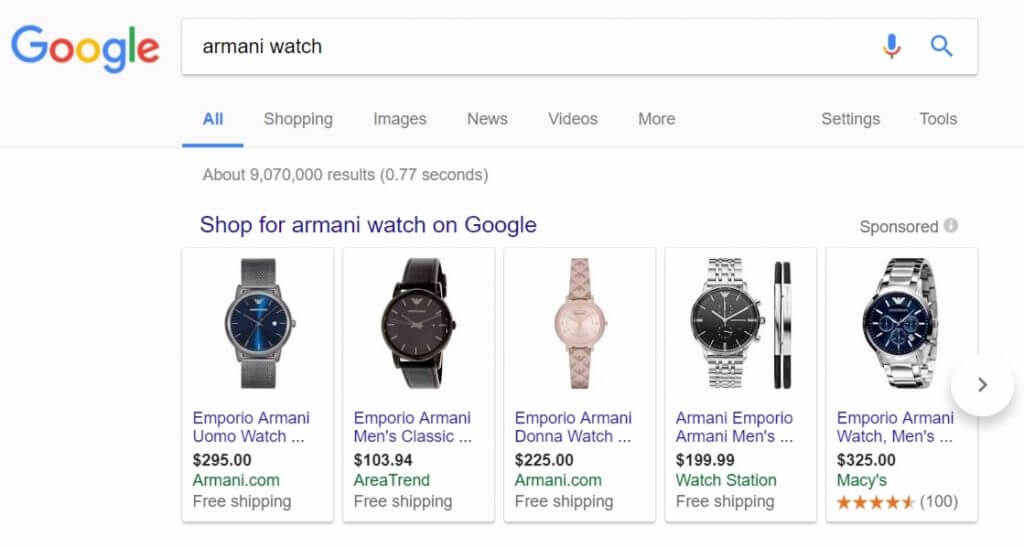
Take Action: Identify what terms are truly mid-funnel, and how much you want to invest in these mid-funnel terms vs. lower-funnel terms. Each vertical is different, particularly if you’re a reseller.
Break Out Your Best-Selling Items
You may want to segment out individual budgets on Google Shopping for your best-selling items and make them higher priority. Give those bigger budgets and more aggressive CPCs. You may even want to break them out according to the mid-funnel search terms mentioned above.
Take Action: Segment out your best sellers, but don’t stop there. Are there trends in your industry that will be hot in Q4? If that’s the case, break those items out, too. (And obviously, make sure you have enough in stock!)
Text Ads Tips
Update Ad Extensions
AdWords extensions take up more real estate on the SERP–which means your customers may be more likely to click. There are plenty of different types of extensions (we wrote about 11 of them), but here are two of the most valuable ones to use during Q4:
Sitelinks
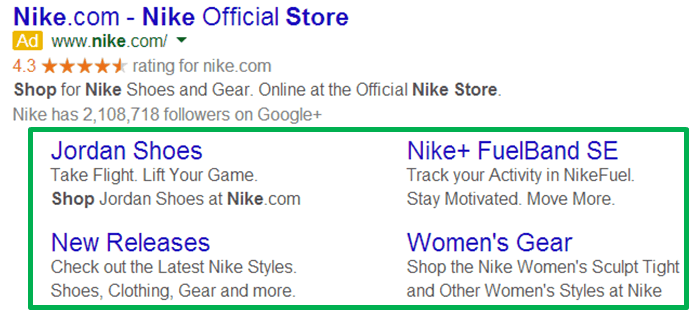
- Leverage sitelinks to send users to a dedicated promotional page
- Apply at the most granular level you have sitelinks applied (campaign vs. ad groups) if you already have existing sitelinks running
- Set start date and end dates to avoid running ads beyond sale dates
Callouts
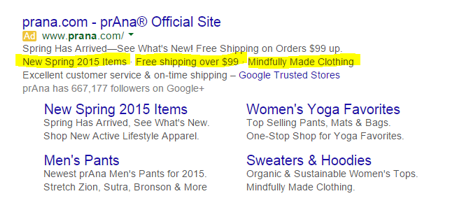
- Best used for site wide promotions
- Free Shipping, X% off Black Friday, Price Match, etc.
- Set start date and end dates to avoid ads running beyond sales dates
Two other new extensions to explore this year are Promotion Extensions and Price Extensions. It’s also worthwhile to look into visual sitelinks, which can set you apart on a crowded SERP.
Take Action: Make sure extensions are set up properly before Q4 hits and set end dates to avoid going over time and wasting spend.
Relevant Post: AdWords Sitelinks: What Headline Drives the Most Conversions?
All AdWords Tips
Plan on Data Delays
Data is useful, but only when it’s current. Get estimates for the following data points with these workarounds:
- Impression Share won’t show right away (takes 24+ hours to appear in account), so use the avg daily impressions over the past few days to gauge your trending impressions.
- Auction Insights won’t show right away (takes 24+ hours to appear in account), so do live Google searches for your top search terms/products to make sure you’re still ranking strongly.
- Conversions won’t always show right away (takes up to 3 hours to appear in account), so loosen your ROI threshold to account for the potential latency.
Take Action: Plan to use the above workarounds for the most accurate data.
Use Powerful Remarketing Tactics
Email lists (CRM) are a great way to get around cookie limitations–consider segmenting by holiday-specific past buys for even more granularity.
As conversion rates increase, you can afford to go up the funnel rather than focusing on the bottom. Make sure to leverage remarketing and RLSAs to maximize the initial click’s value, and use a long-window past purchaser list to maximize your reach.
Take Action: Don’t just let CRM lists sit there–segment and prep them so you can retarget them throughout Q4 (and beyond).
Relevant Post: RLSA Strategies: Target and Bid versus Bid Only
Scale Back Bids Based on Final Ship Dates
The “final ship date” is the last day you guarantee products will arrive by Christmas.
After this, you’ll want to reduce your bidding rules–you don’t want to bid in late December based off Black Friday or Cyber Monday data.
There is one exception to this rule–if you have brick and mortar stores, you may want to stay aggressive with bids to drive in-store purchases.
Take Action: Look at historical data to gauge the drop-off after the shopping holidays, and prepare to proactively bid lower.
Loosen Your ROI Goal
To help maximize order volume you’ll want to loosen your ROI goals a bit. If you were currently aiming for a 10:1 ROI, for instance, you may want to loosen that to an 8:1 with the goal being to get more traffic for more sales. While a two point hit might take a little off your return, being a little more lenient in an effort that leads to new customer acquisition should even out in the long term.
Bonus: Keep an Eye on Showcase Shopping Ads
Google’s Showcase Shopping ads emerged in 2016, and we haven’t thought too much about them until recently.
The ad format was meant for top-funnel searches (broad and non-branded queries), but we are seeing it serve for more mid to low searches as well, which could possibly make it a big impression driver for Google Shopping, according to Brisco.
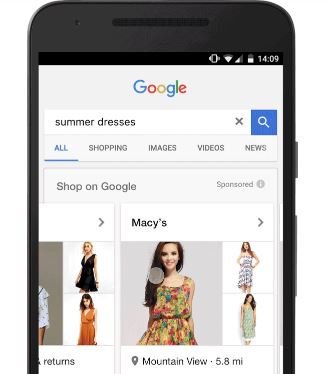
“The new Showcase Shopping ad format performance & usefulness, while still very new and untested, will be very interesting to see as we get deeper into Q4, Brisco says. “Having a presence here may make the difference in getting in front of potential customers early in their search cycle, and missing out completely on a new customer.”
Get ahead of Q1 and get more out of your Google Shopping Campaigns post-Q4:
You Might Be Interested In


